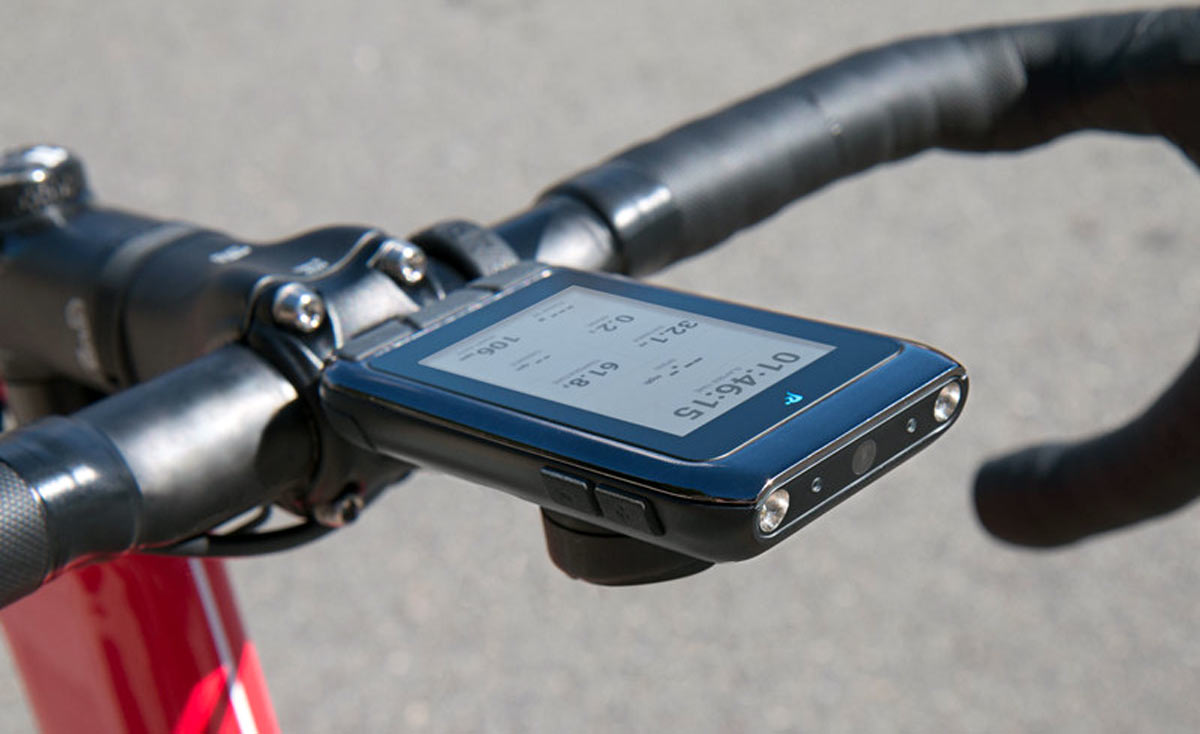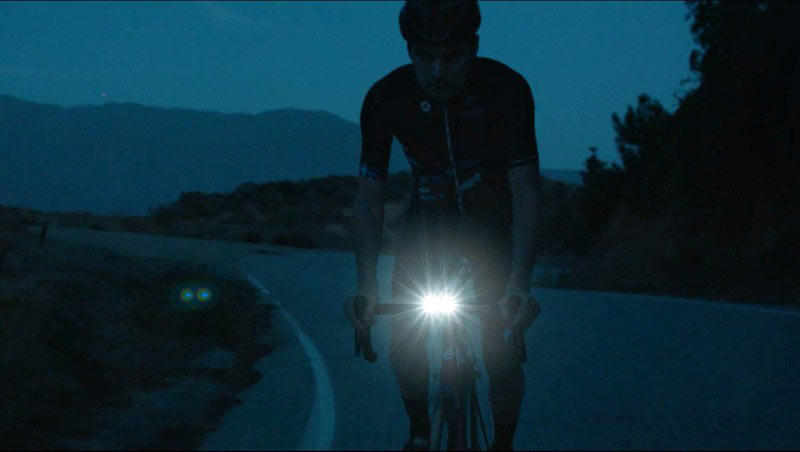We all want that sleek out-front look for our GPS cycling computers, but by the time we add a headlight, and possibly an action cam, those aero aesthetics get thrown out the window. Refactor Fitness fixes that by combining an HD video camera and LED lights into a thin, full featured GPS cycling computer. It’s called the RF-1, and it runs on Android 7.0 so you can customize and update it over time. Here’s the scoop:
The main exterior features are the twin 60 lumen LED lights (120 lumen total output) and 1080p HD camera that records at 30fps. It acts as a dash cam, too, saving the last 20 minutes of your ride on a loop in case you crash and need evidence. Behind the 3″ color touchscreen, which they say is visible in bright sunlight, lives ANT+, Bluetooth LE and WiFi connectivity, plus the usual GPS cycling computer features. Run it all and you’ll find the only tradeoff – battery life. It’s rated at 12+ hours, though, so should be good for 3-4 normal rides at least.
Cool features include GPS routing and mapping, iOS compatibility, and virtual power estimation. That last one is possible thanks to the built in accelerometer, altimeter, and barometer. They say the accelerometer determines the gradient faster than an altimeter, while the barometer measures the air density. Combined, the RF-1 is able to produce an accurate estimate of your power output. All packed into a IP67 waterproof case. Finish the ride and it syncs to your Google Drive cloud account to save routes, ride data and video.
Full specs are:
- Advanced GPS Maps: Better GPS mapping functionality than standard cycling computers with pinch to zoom multitouch, and GPS and GLONASS reception.
- HD Camera: 1080p Camera that records at 30fps with an alternate function to record at 720p at 60fps. Record the whole ride, or set one of the buttons to act as your start/stop to record only what you want, or turn on…
- Dash Cam Mode: Alternate camera mode that continuously records the last 20 minutes of your ride to ensure nothing is ever missed while saving space.
- Android 7.0 Software: Responsive software with fast, detailed maps, continuous video recording, assignable buttons and screen areas, accident notification and third-party upload integration (with more partners coming soon).
- Dual 60 Lumen (120 total) Ultra-Efficient LEDs: High power ultra-efficient LED lights that illuminate the way for cyclists while allowing drivers and others to see them from a distance.
- 32GB Of Storage: 32GBs of flash storage provides all the room you’ll need to record rides, download directions and more.
- ANT+ and BTLE: Connect any ANT+ or BTLE sensors to the RF-1 system to display your heart rate, cadence, speed, and power.
- 1.2 GHz quad-core processor with 2GB of RAM: A 1.2 GHz processor with 2GB of ram lets you access anything and everything with ease.
Eventual retail price will be a little over $400, but early bird specials start at $289 for a head unit and mount. Delivery is slated for March 2019.

